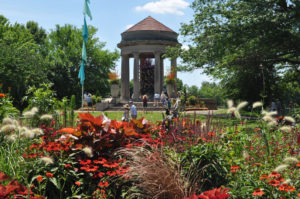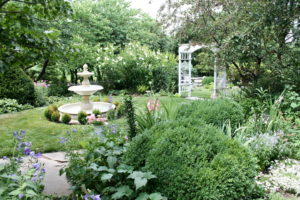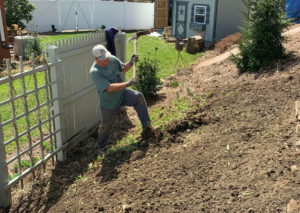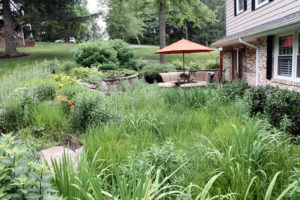Are You Suffering from These Gardening Diseases?
June 28th, 2022
Gardeners are prone to all sorts of medical and psychological afflictions not faced by the “normal” population.
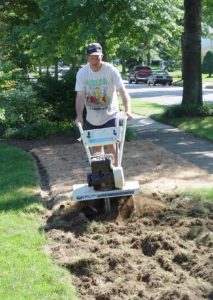
This poor soul is suffering a bout of chlorophyllosis.
Maybe it’s the price we pay to conquer the many threats and curveballs involved in getting things to grow.
I thought I’d go over nine of these maladies that aren’t even well known in the medical community.
Chlorophyllosis
This is a gardener’s disease that usually strikes in May and involves an uncontrollable urge to dig out turfgrass and replace it with landscape plants. It tends to be chronic.
Symptoms include sudden bursts of adrenalin on weekends plus confusion and temporary loss of judgment at nurseries and garden centers. If uncontrolled, it can lead to bank overdrafts, and in severe cases, roof-top gardens.
Treatment: Chlorophyll cream and lavender aromatherapy. Otherwise, move to a new home with a large bare lot, and get a second job.
Furraphobia
This is an obsessive-compulsive disorder that involves an irrational fear of furry, four-legged, herbivores (especially deer, groundhogs, rabbits, and voles). Also common is a compulsion to examine plants for chewing damage every five minutes.
Other symptoms include anxiety, irritability, insomnia, and night sweats (sometimes day sweats, too, after chasing furry intruders out the yard).
Treatment: Anger-management therapy and possibly blood-pressure medication.

An attack of Cram Disease in progress.
Cram Disease
One of the most common gardening disorders, Cram Disease is recognized by an inability to understand and follow written planting instructions.
Symptoms include sore wrists from trowel overuse and garden beds packed so tightly with plants that even raindrops can’t get through.
Treatment: No cure is known, and relapses are common.
Cliptomania
Characterized by an uncontrollable urge to clip seed pods and tip cuttings from others’ plants, this psychological disorder gets worse with age and seems to strike females more than males.
Symptoms include green fingers and a swollen purse.
Treatment: Casts on both hands and avoidance of all cutting implements.








